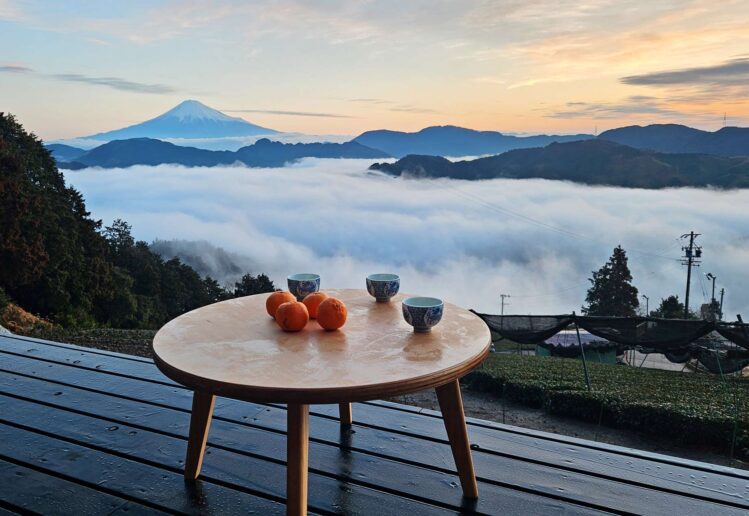[PR] This month, I had the chance to participate in a media tour with Arigato Travel and Visit Suruga, which took us to Suruga and the surrounding area in Shizuoka Prefecture. Everything revolved around the theme of tea, and by the end of the three-day tour, green tea was practically flowing in our veins. In this article, I’d like to tell you more about the tour’s destinations and take you on a journey to this beautiful part of Japan.
Day 1
Tea Texture Art Workshop
After a very early start in Shibuya, our first tour stop was En Café, where Anri-san combines café and art workshops. And since our tour revolves around tea, we surely also got involved with some artistic activity. Following the principle of upcycling, we were able to include sencha, kocha, and matcha teas, that were no longer suitable for sale, into our little works of art. Afterwards, we could enjoy a cold tea and toast for lunch right there in the café.
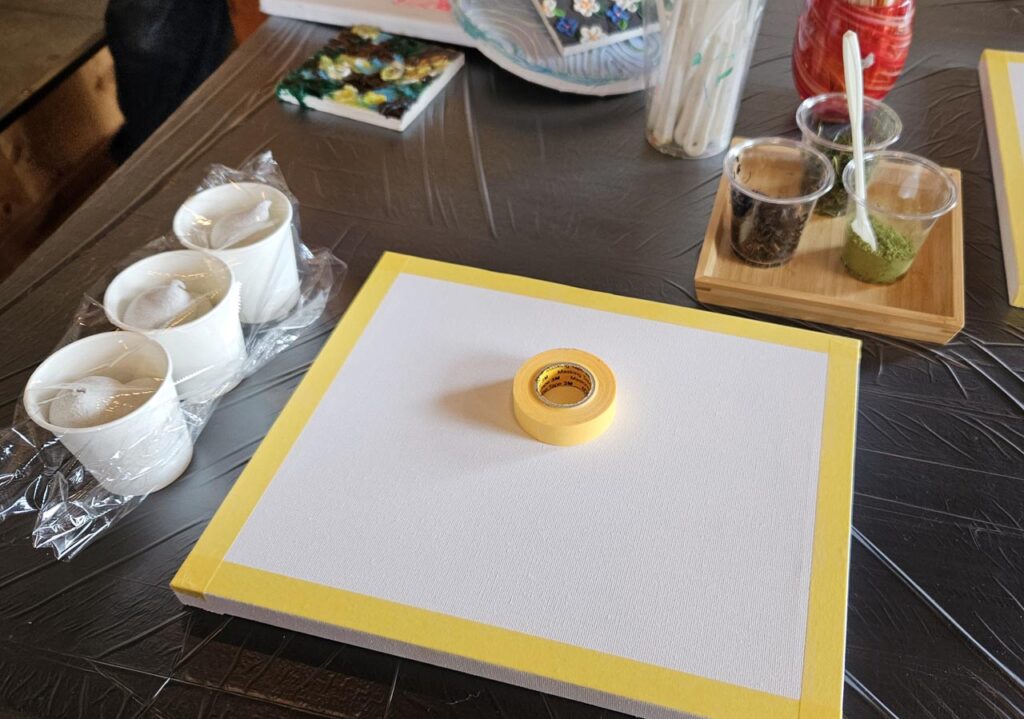
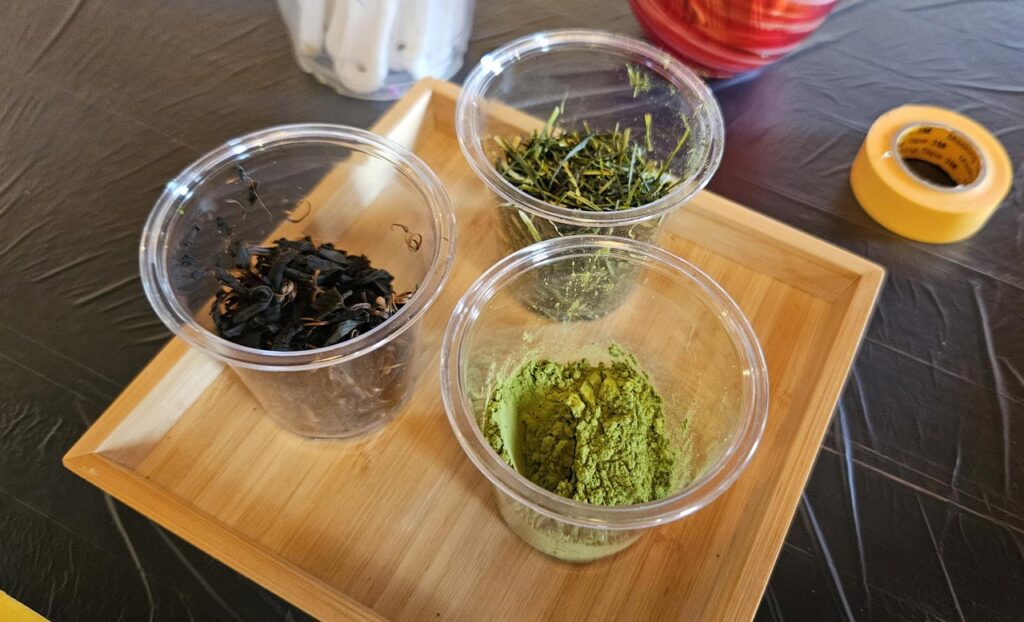
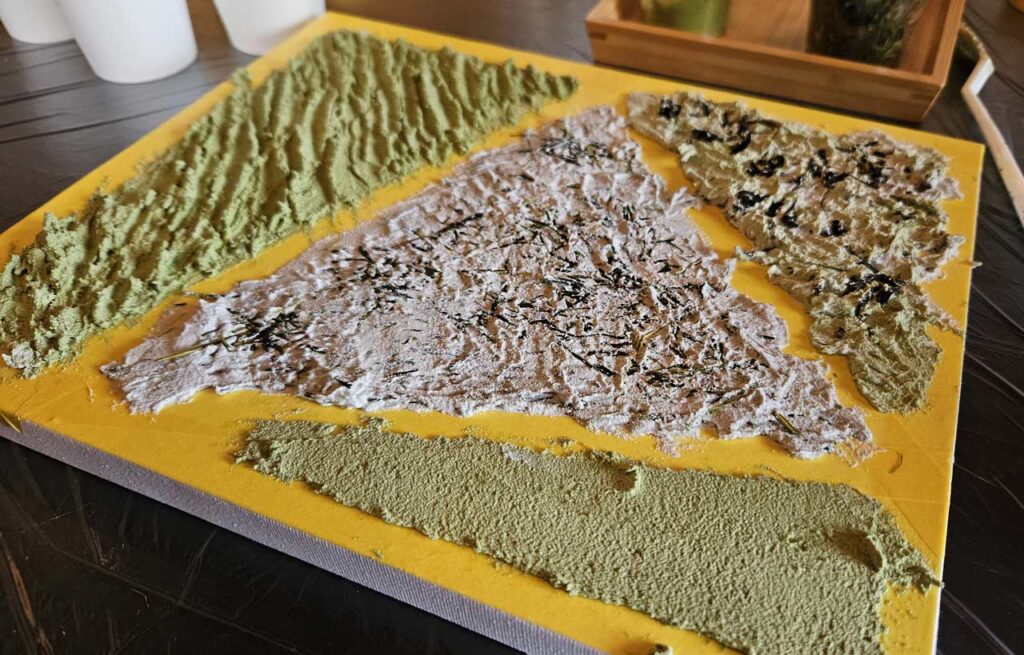
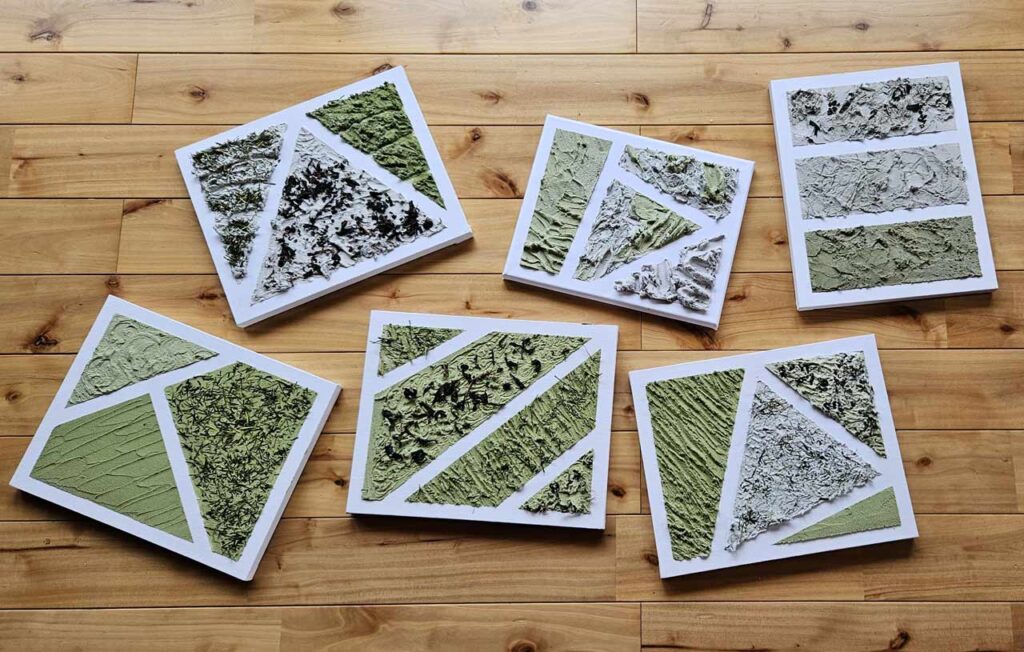
Visit of the Tamura Tea Farm
Our journey continued to the Tamura Nouen Tea Farm, which has been run by the family for 13 generations. On clear days, you can see Mount Fuji from the tea plantation high in the mountains and enjoy the organically grown tea while sitting on tatami mats on the wooden terrace. In winter, there’s even a kotatsu (a heated table)! Unfortunately, the weather wasn’t on our side, so we took refuge in Tamura-san’s old Japanese house to taste the tea.

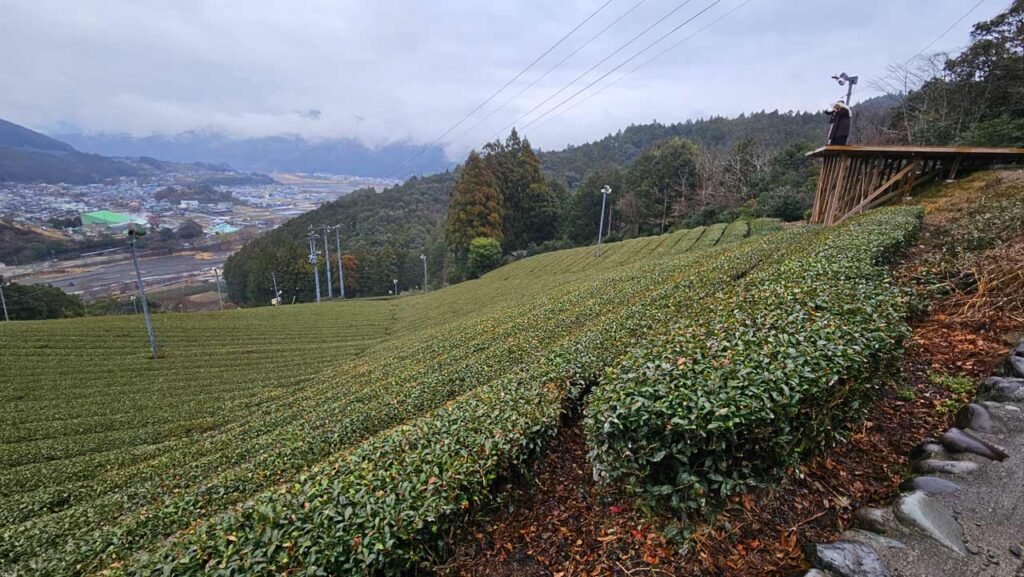
The tasting included green tea from the farm, of course, but also a hochija variety blended with Japanese herbs. Very interesting and delicious. The highlight, however, was the matcha fondue, which was incredible with matcha and melted white chocolate. Afterwards, we were treated to a cup of matcha, which we could whisk ourselves.
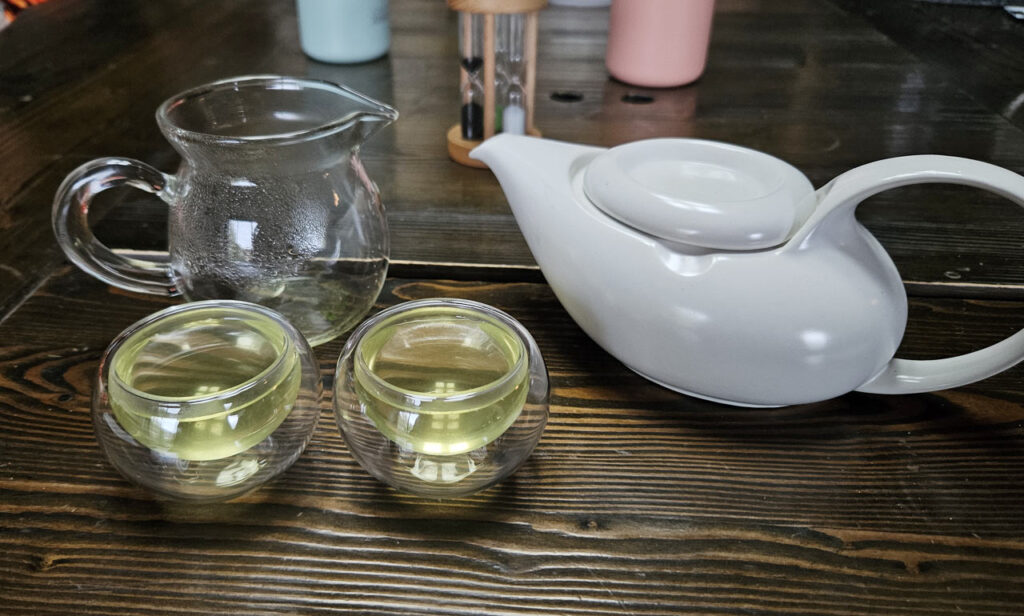

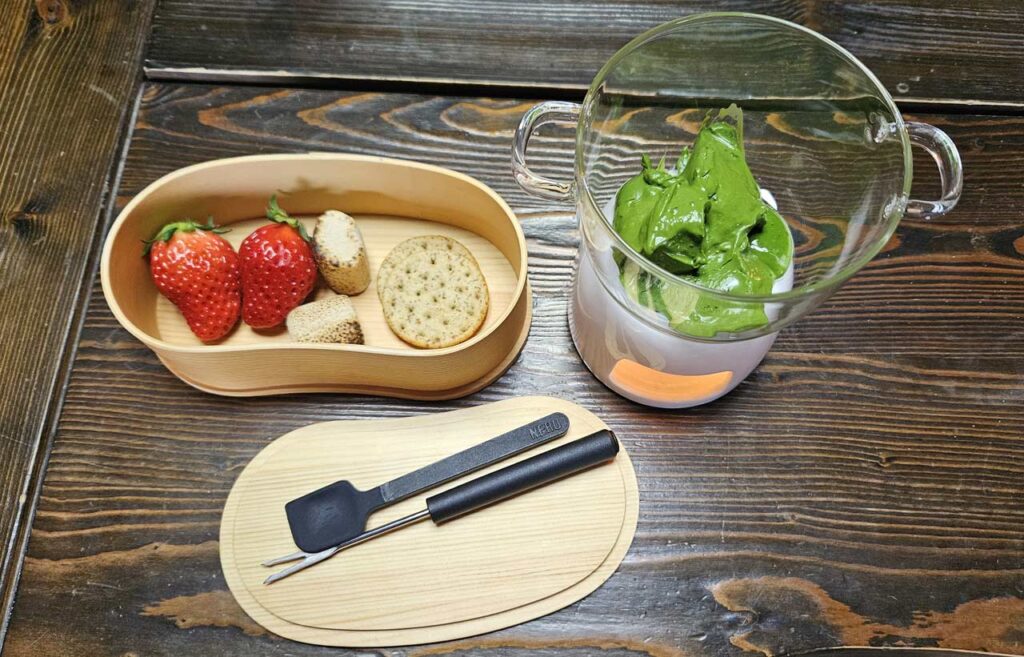
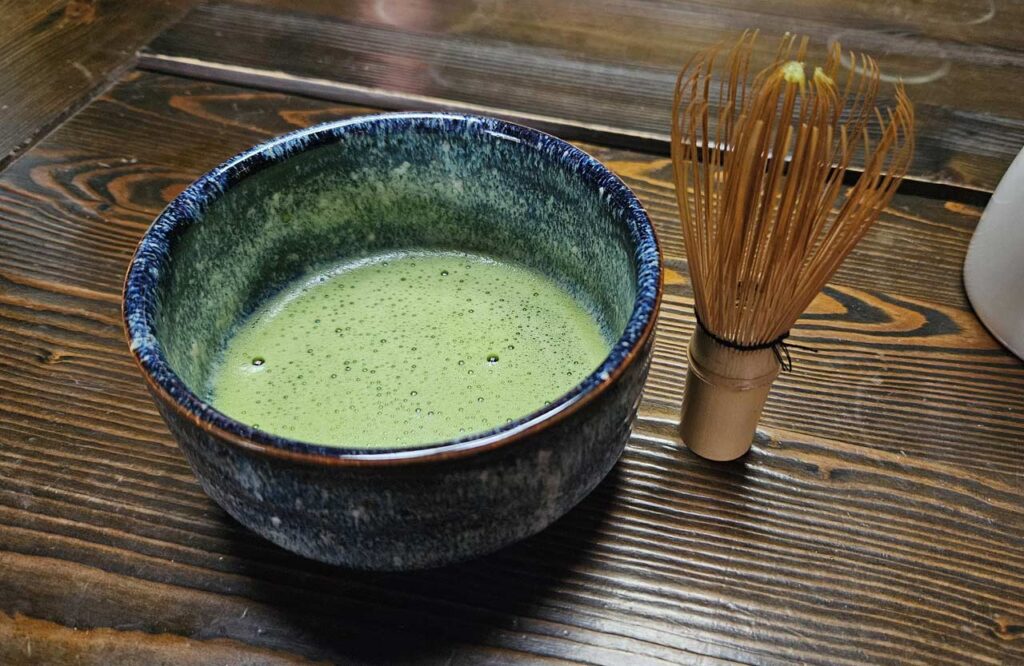
Calligraphy with Matcha
The Japanese language has its pitfalls – and kanji are among the more challenging. Especially when it comes to calligraphy, which requires writing the characters with the right pressure, the right vibration, etc. Our Matcha Calligraphy workshop was led by the friendly Shoran-san, who has already enjoyed international success with her calligraphy. Instead of regular ink, however, we used matcha powder, which is mixed with cold water to create our “green ink.” First, we practiced a few basics with the character 永 (eternity) – and at that moment, I was glad to have already taken a calligraphy workshop – before we could choose a character from her collection. I chose 夢 (dream). After a few practice attempts, we were able to write on a shikishi, which we could hang up later.
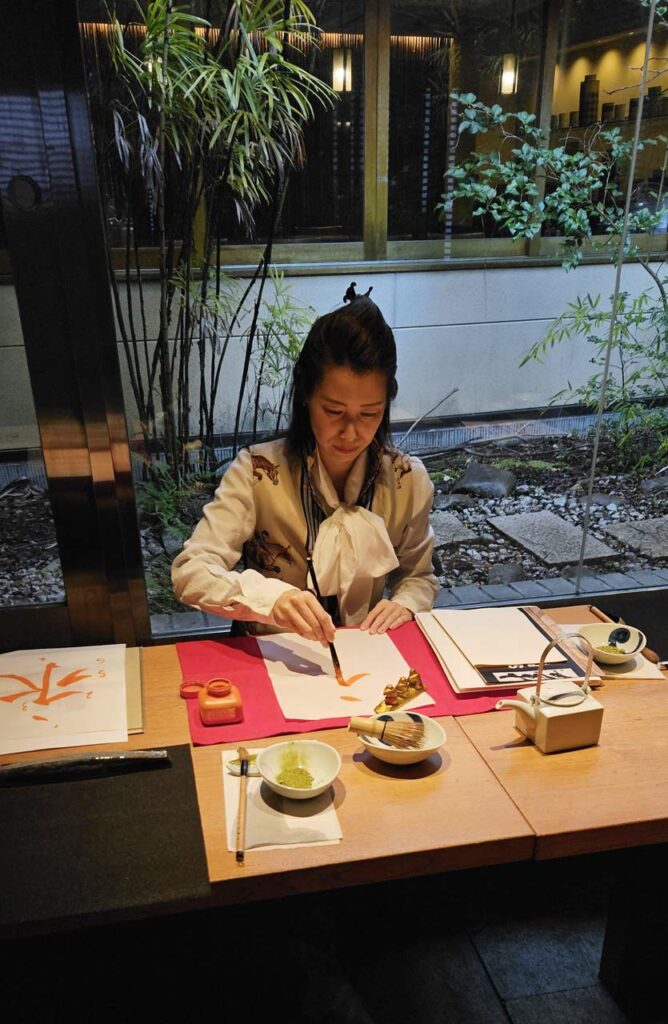

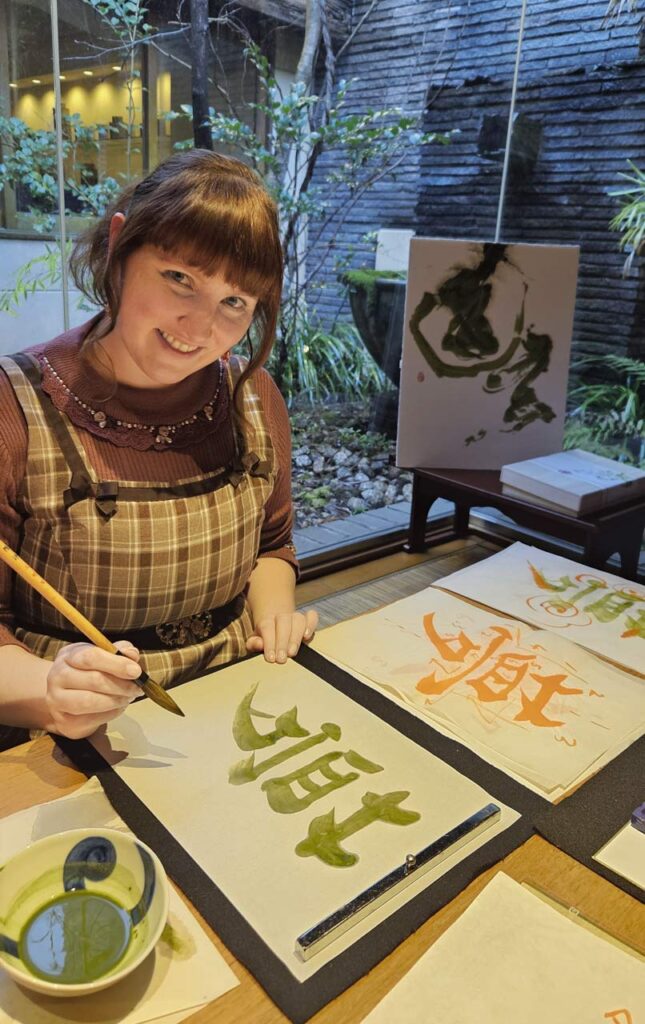
Blending Your Own Green Tea
The last activity of our first day was a Tea Blending Experience. Tea master Maruhide Iwasaki first explained what blending different teas is all about and how to create the “story” behind them. We then looked at, smelled, and tasted different teas and chose our three characters in our story. Iwasaki-san combined and blended these to create our own special tea, one that no one else has.
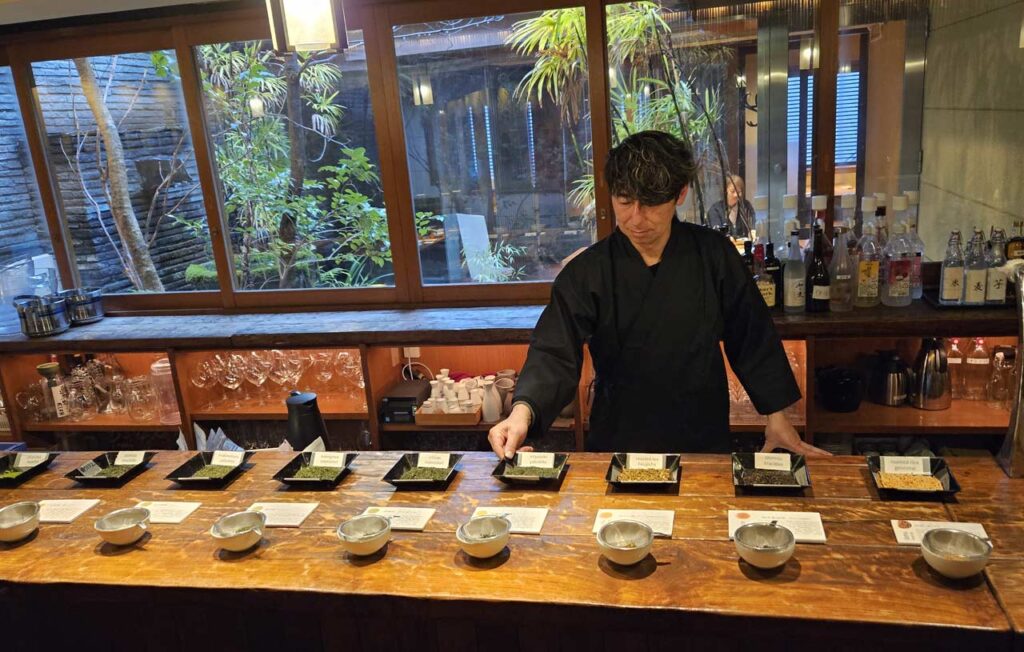



Hotel Grand Hills Shizuoka
We spent our two nights in Shizuoka at the Hotel Grand Hills Shizuoka, located directly across the train station. From our rooms with large windows, we could watch the Shinkansen bullet trains arriving (or speeding through) the station, which was a great relaxing time for me. In good weather, you can also see Mount Fuji from here, although we weren’t lucky during our three days at the hotel… The hotel also offers a delicious breakfast buffet, including regional dishes. This way, you can start the new day feeling full.
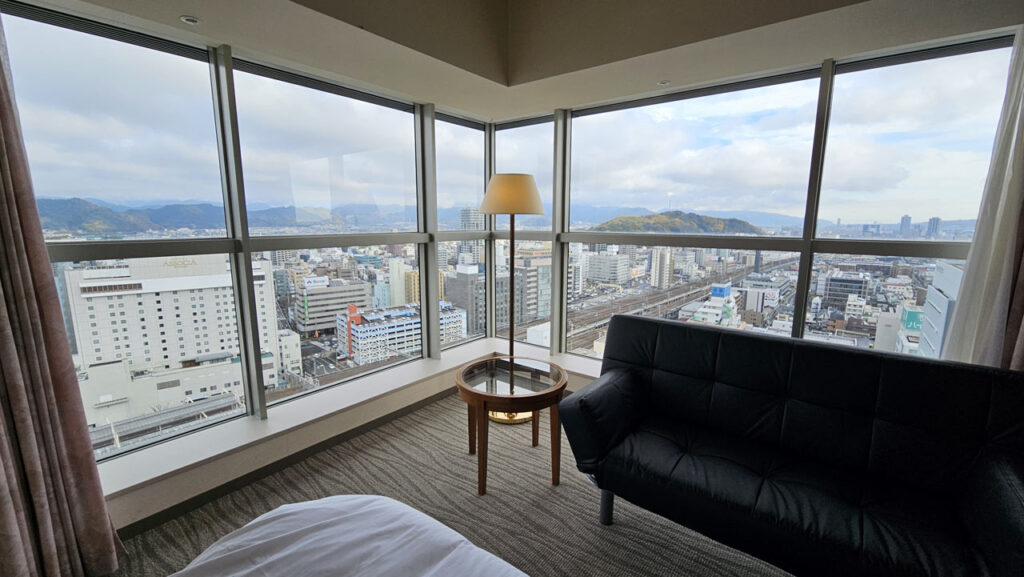
Day 2
Gyokuro no Sato
Our second day was, of course, also centered around green tea. We started with a visit to the teahouse of Gyokuro no Sato. There, we participated in a tea ceremony, where we enjoyed two small cups of gyokuracha along with some pretty neriki wagashi (Japanese sweets). Gyokuro tea is considered one of the highest-quality Japanese green teas. It is grown in full shade for around 21 days, which greatly reduces the bitterness. It is especially interesting to see all the details of the Japanese teahouse and then stroll through the beautiful garden.
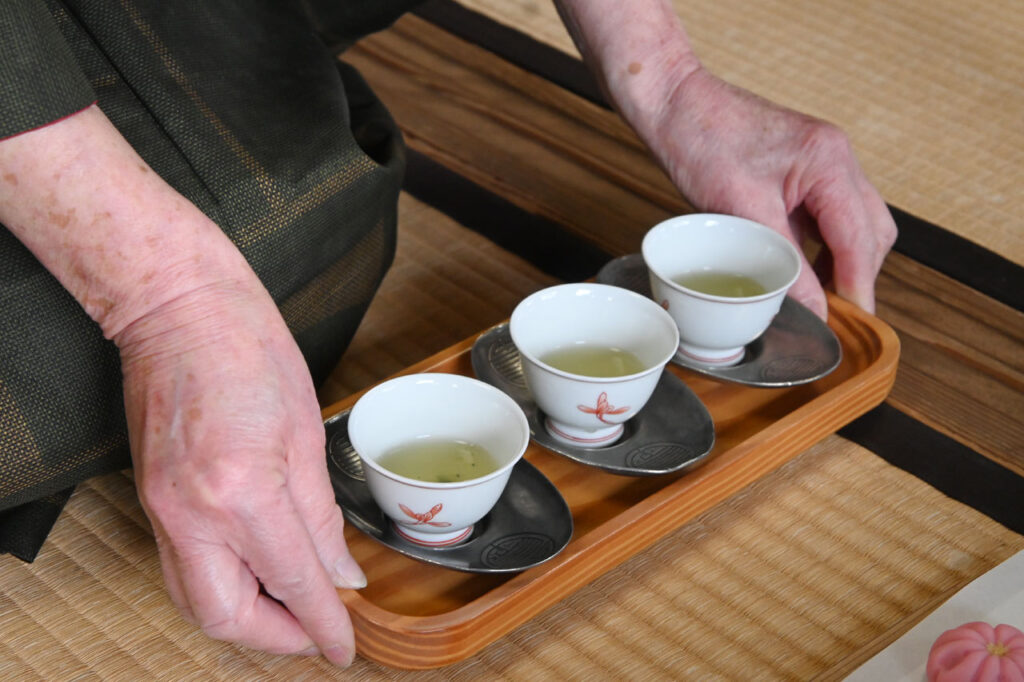

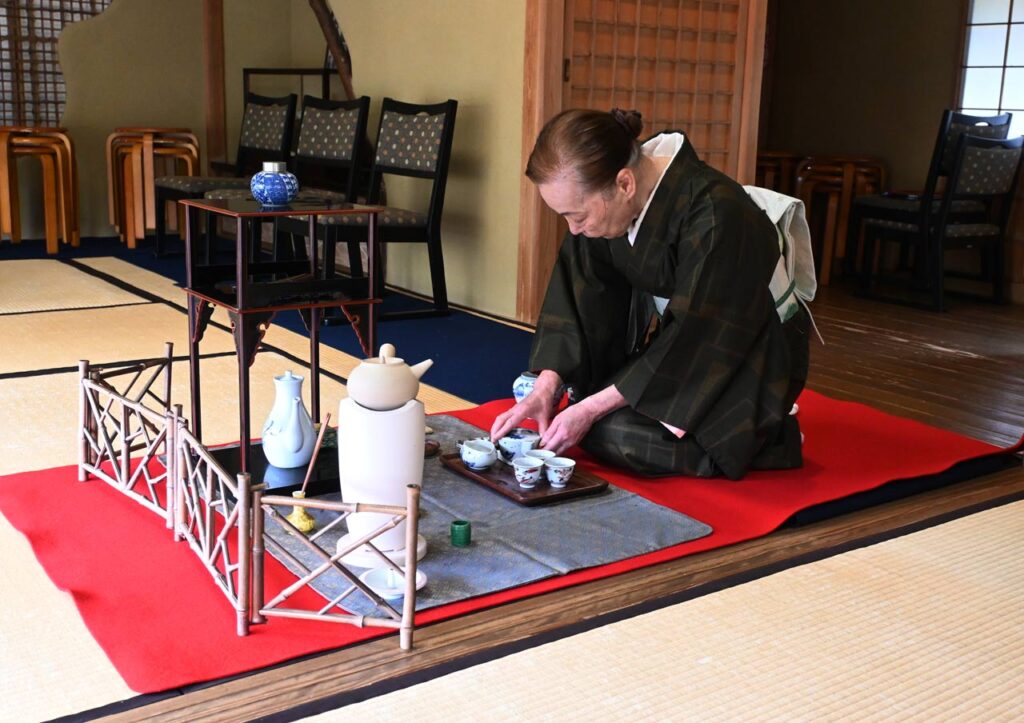
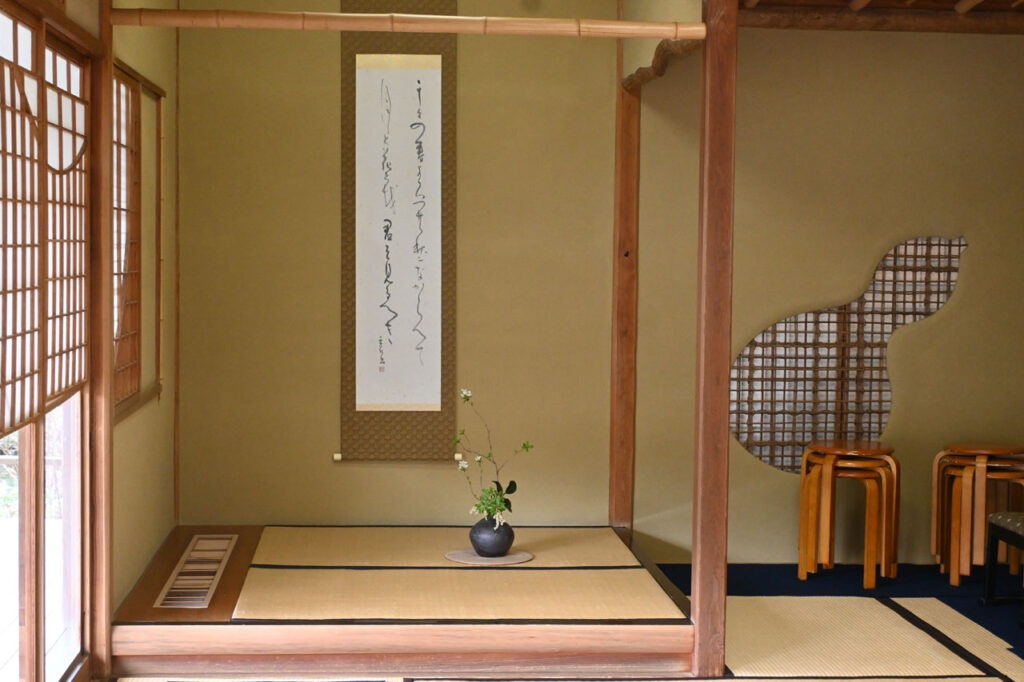
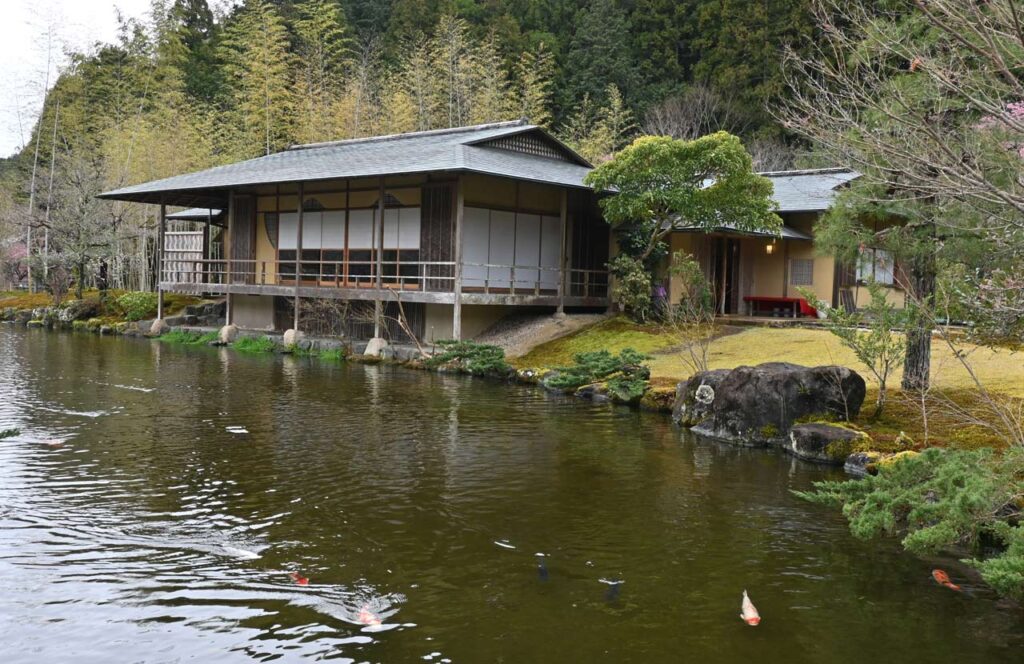
The Shizuoka Tea Museum
We then continued on to the Shizuoka Tea Museum, located on the Makinohara Plateau, Japan’s largest tea-growing region. The museum is surrounded by tea fields, and in the background, on a mountain, you can spot the character 茶 for tea. The complex includes a museum, a tea ceremony house, a garden, and a shop where you can purchase numerous varieties of tea, as well as tea products such as sweets, teapots, and more. The museum itself provides information about the tea industry, history, and culture not only in Shizuoka, but throughout the world. Courses are also available to learn more about tea.




Visit to the Moriki Tea Farm
Our journey continued to another tea farm, this one run by the Moriki family. Already in their 10th generation of tea farmers, the combination of a strawberry farm makes the Moriki Farm something special. We were able to sample various teas – both hot and cold. I particularly liked the Sakura Green Tea, and later bought a bag of it for myself. Nevertheless, the highlight – after a delicious onigiri and oden lunch – was the parfait with freshly picked strawberries, strawberry ice cream, and matcha cake. Incredibly delicious and refreshing!
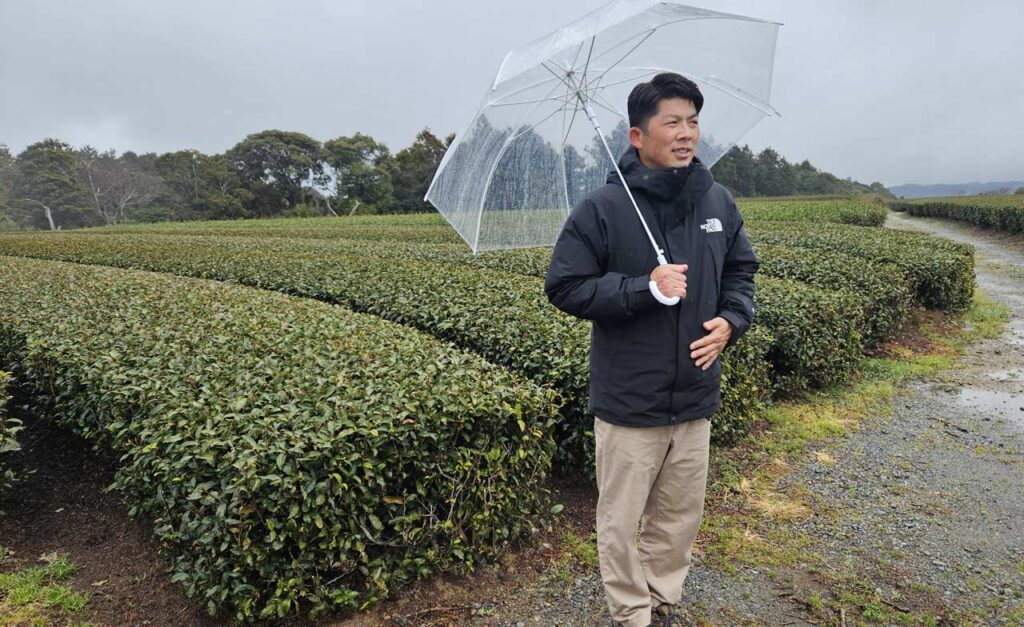
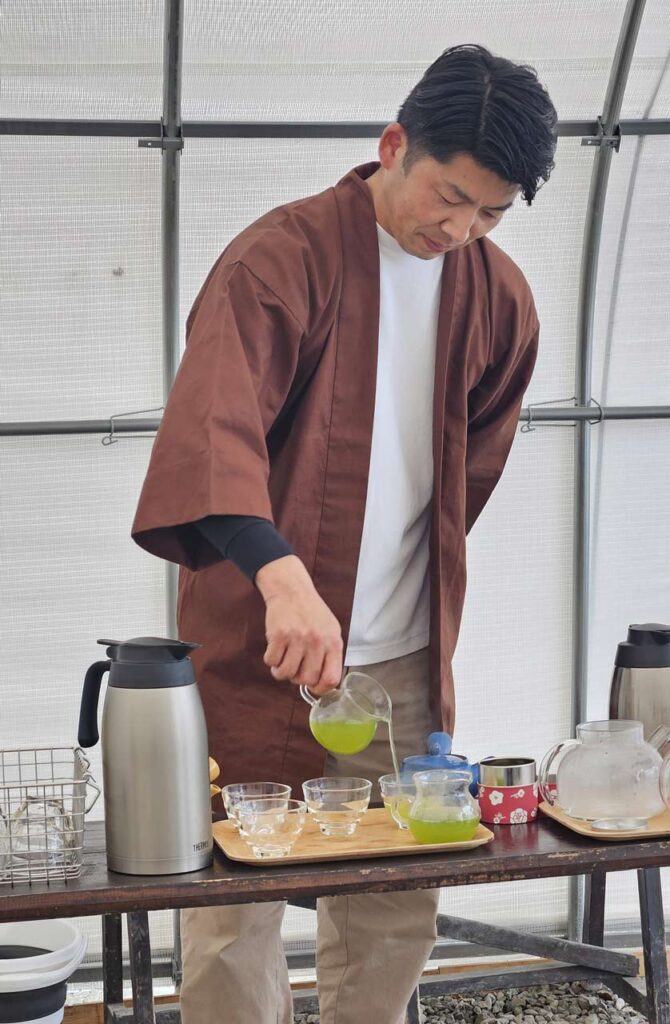
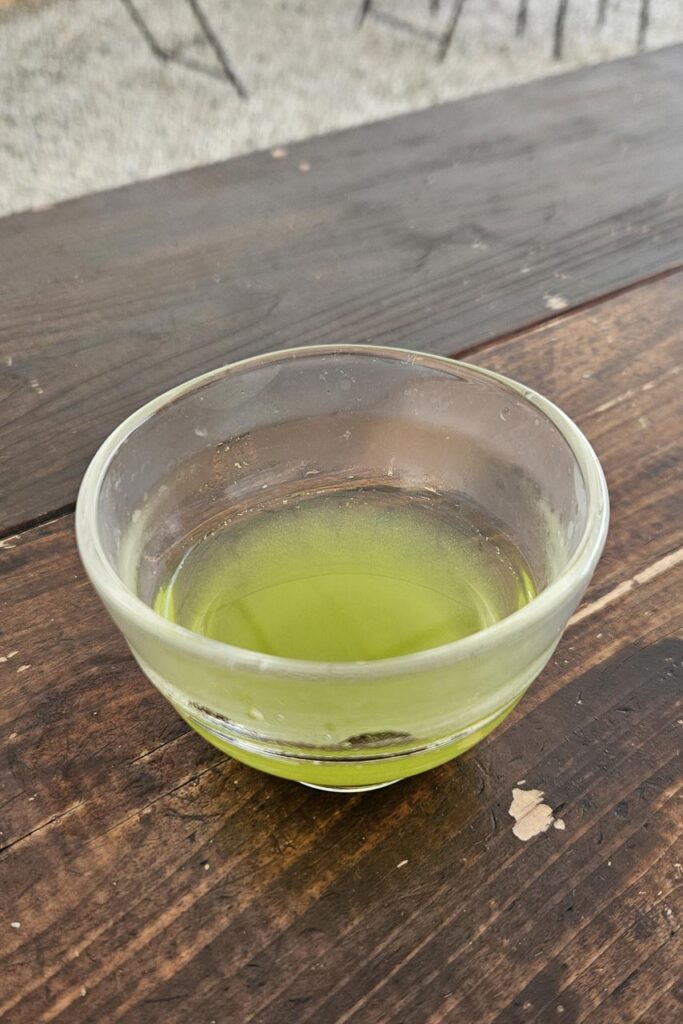
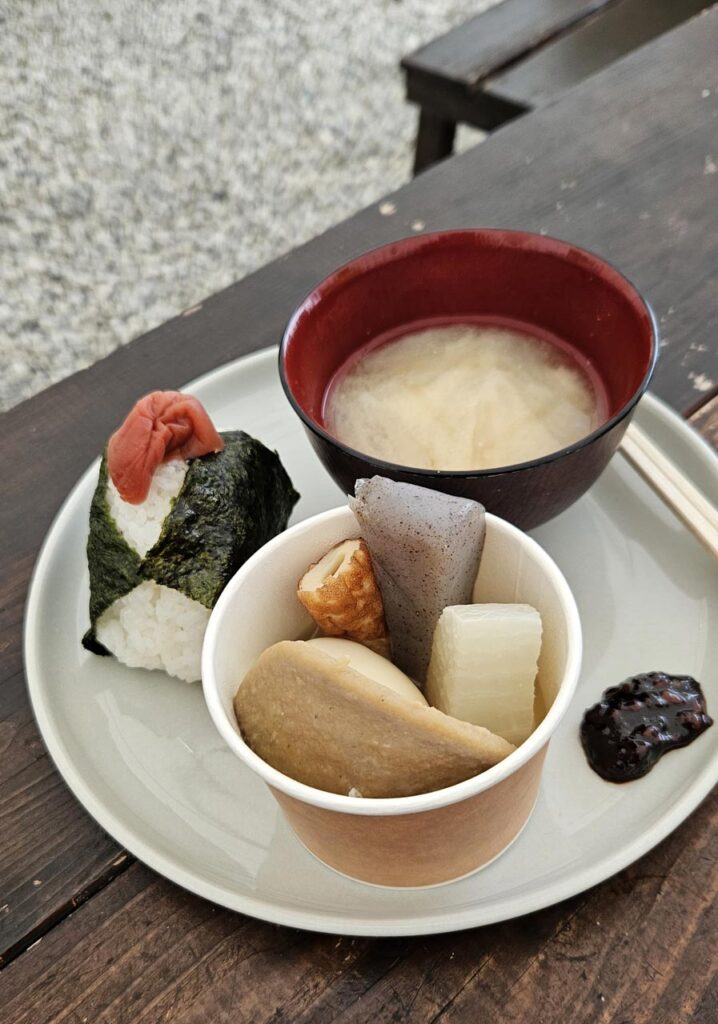
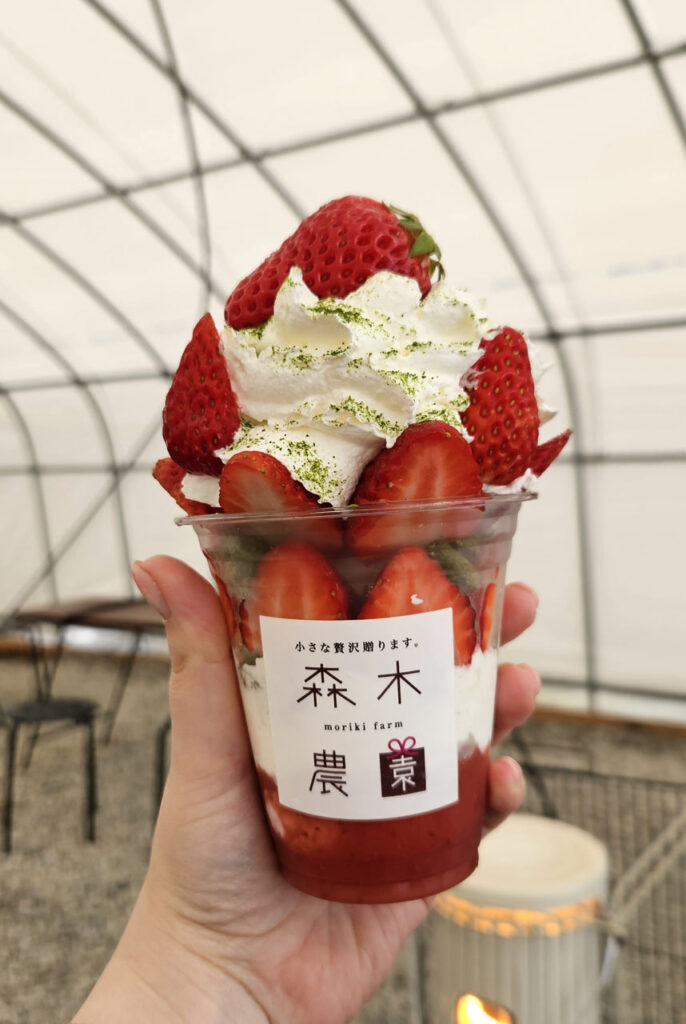
Traditional Hand Craft Arts Center
The Suruga region is also home to many traditional handicrafts. Some of these are found at Sumpu Takumishuku, a complex with so many architectural details that it’s hard to know where to look first. During our visit, we focused on „Ochazome“, a combination of the ancient dyeing technique “Suruga Wazome” and green tea. This technique uses tea leaves that are not suitable for consumption, and the tannins they contain are used to develop the color. At the workshop, we were able to choose a stencil design and then transfer it to a small dyed bag with glue. After steaming, washing, and drying, the design is displayed in a different color and becomes a unique souvenir.
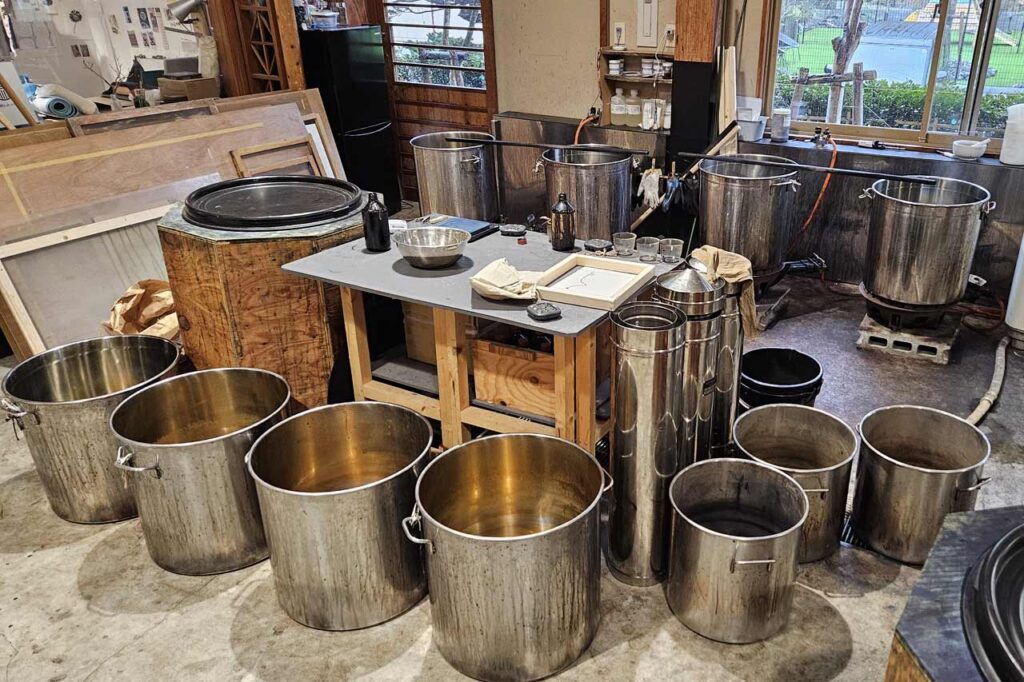
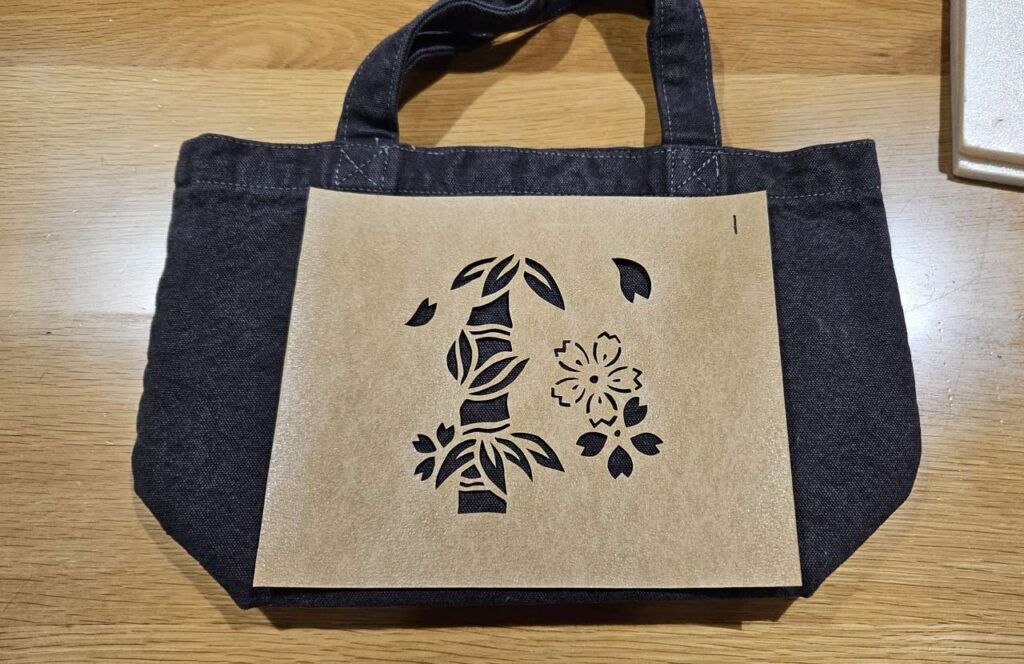
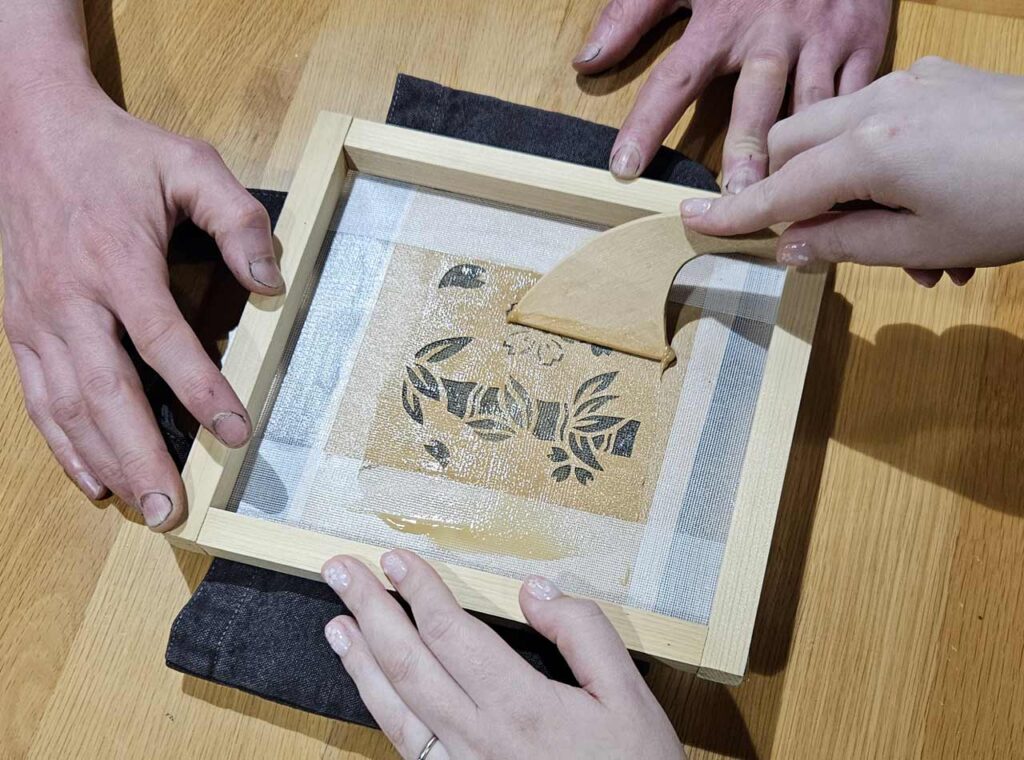
The complex also has numerous other workshops and shops where you can purchase handicrafts. And, of course, there are also cafes. We stopped at Hachi & Mitsu, a cafe that uses local honey and other regional products.
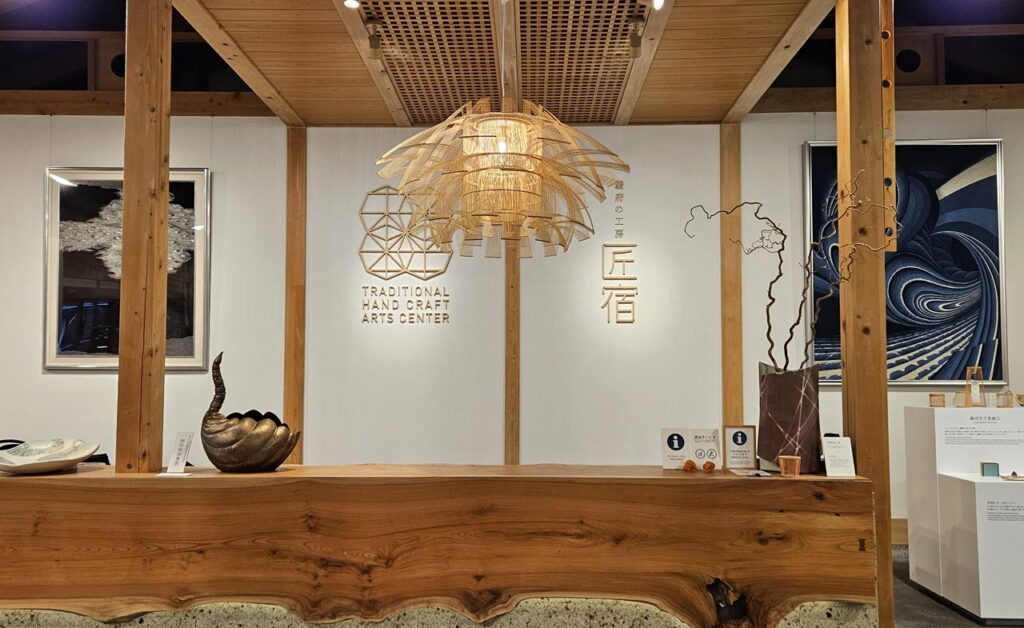
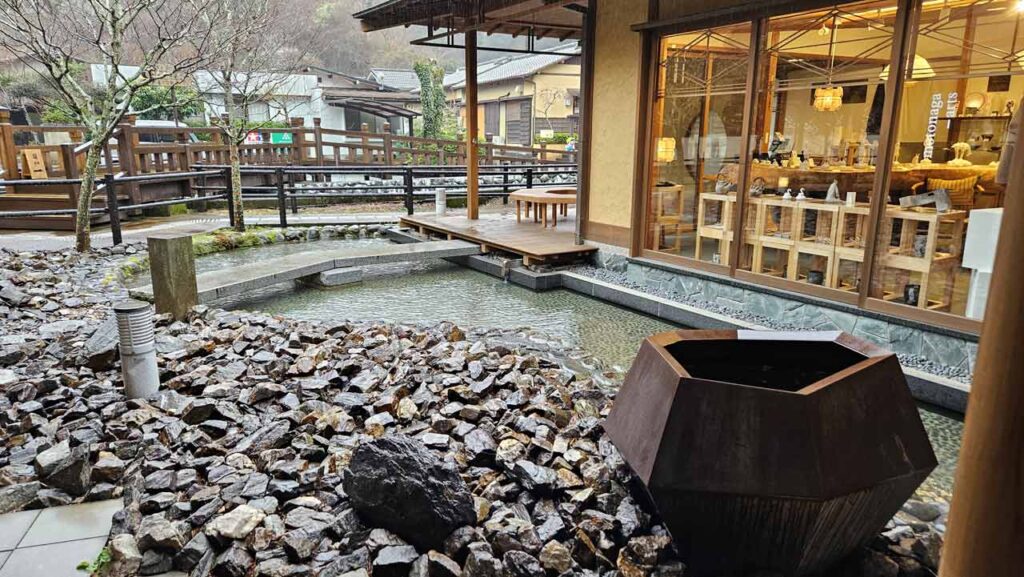
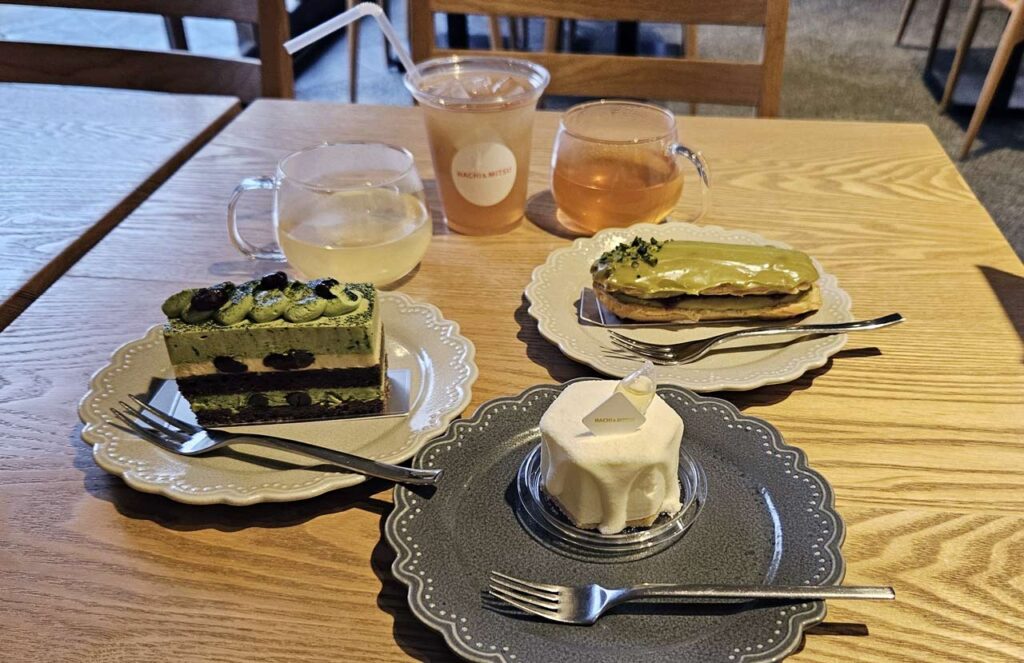

Regional Oden for Dinner
For dinner, we set out to try one of Shizuoka’s famous dishes: oden. While oden can be found all over Japan, Shizuoka oden are especially known for their broth, which consists of dark soy sauce and a black broth made from chicken bones and beef tendon. Skewers with daikon radish, eggs, konyaku, chikuwa, and more are boiled in it. We went to the Oden Izakaya Umi Bouzu, where they have 20 varieties to try. A regional specialty here includes kuro-hanpen 黒はんぺん, a specialty made from minced mackerel and sardines. We had a course menu and were able to try a lot of dishes.
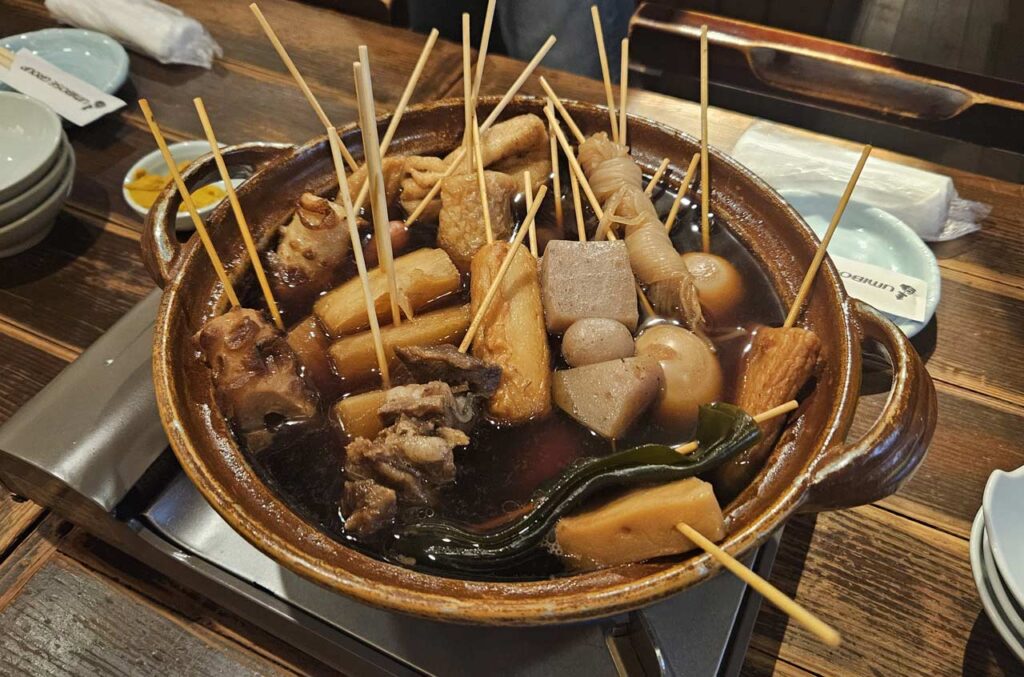
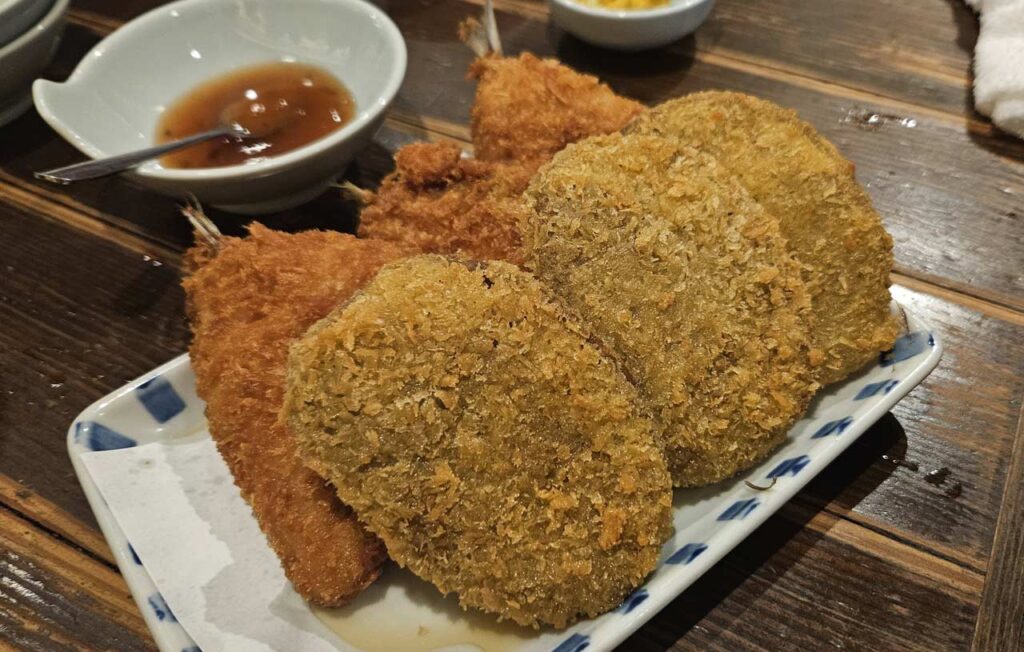
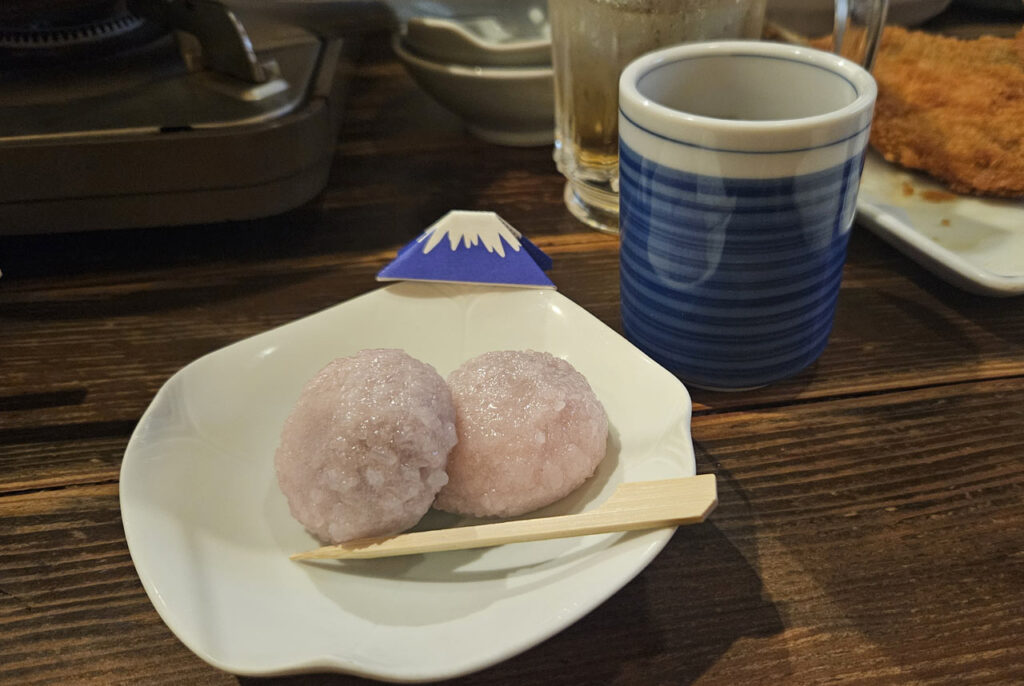
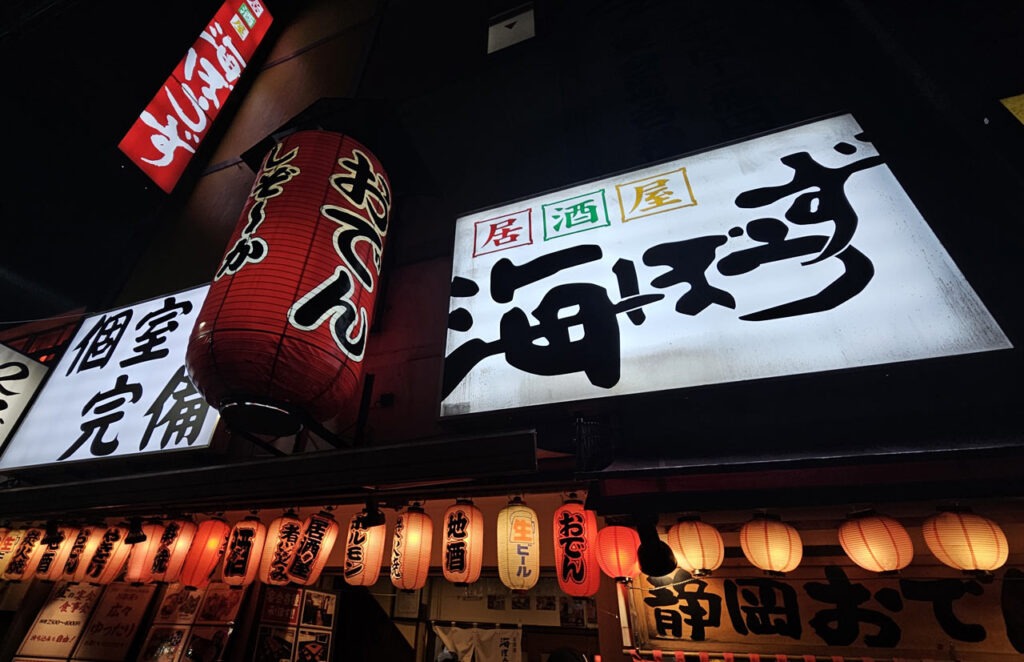
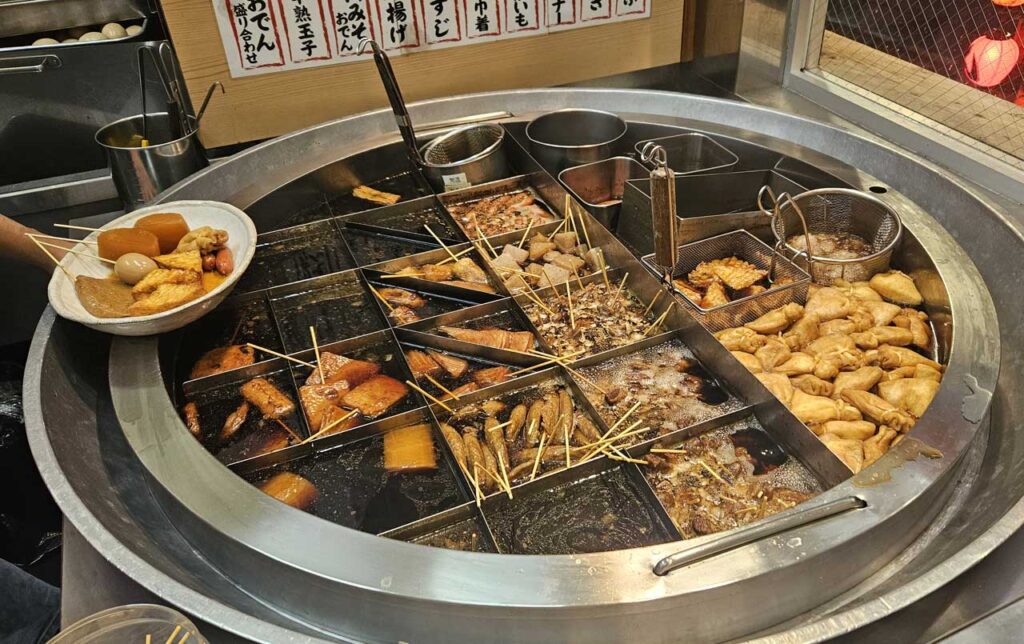
Day 3
Sunrise With Mount Fuji
Our last day in Suruga started early, very early, as we set out to experience the sunrise. After the shy mountain hadn’t appeared for the past two days, we were full of hope to finally see Mount Fuji. And we weren’t disappointed. Around 5:40 a.m., we arrived at the Murakami Tea Garden and were able to watch the sun slowly rise from the terrace above the tea fields. With Mount Fuji and a sea of clouds. Truly breathtaking.
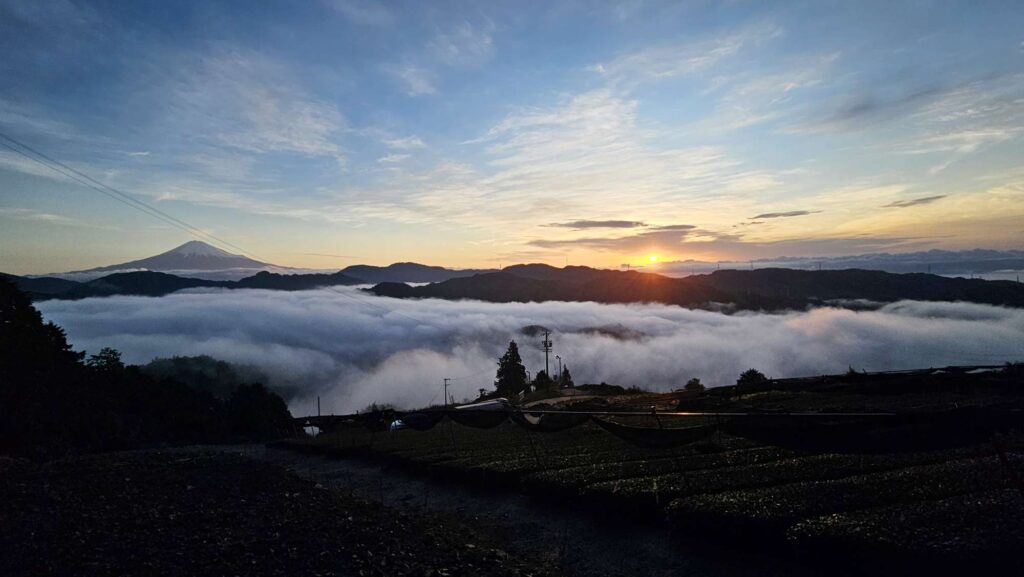
After this special experience, we went to the house of the tea farmer, who also boasts a long family history. Unlike before, this time we tried Japanese black tea, wakocha 和紅茶, which is also made from the same tea plants. There were teas from different harvest periods, but the most impressive thing was the comparison between machine-made tea and tea that is primarily handcrafted.
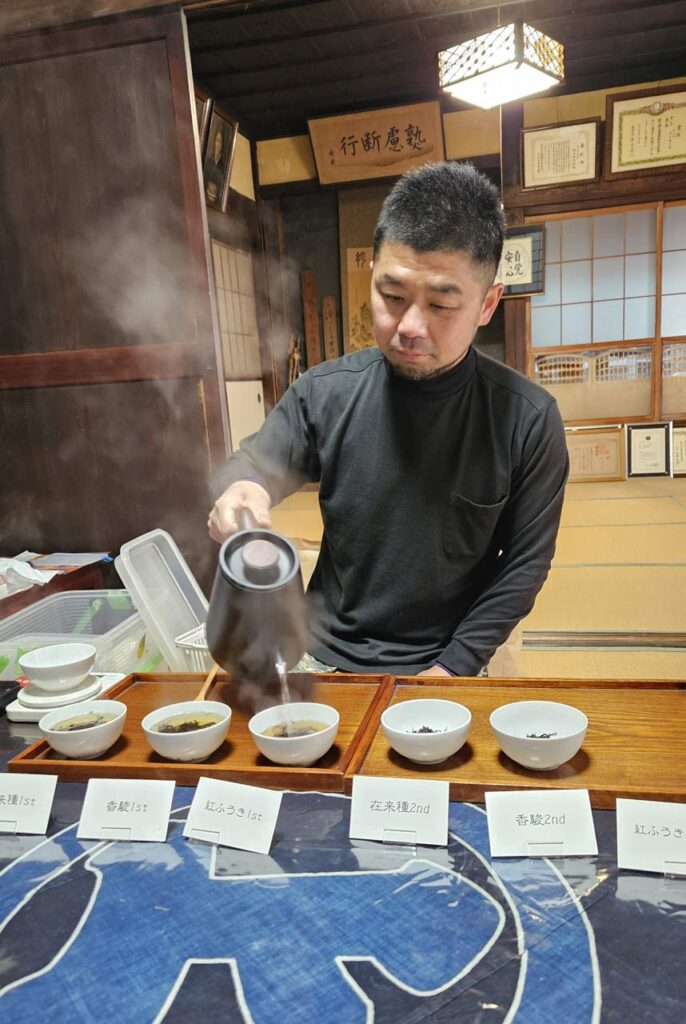
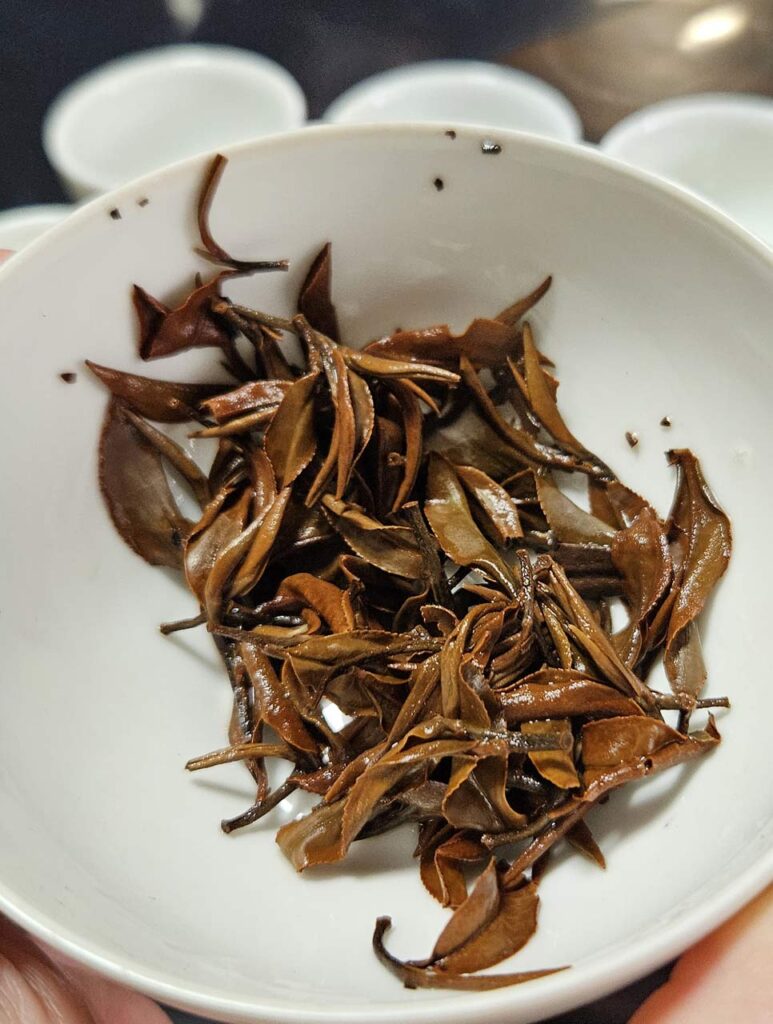
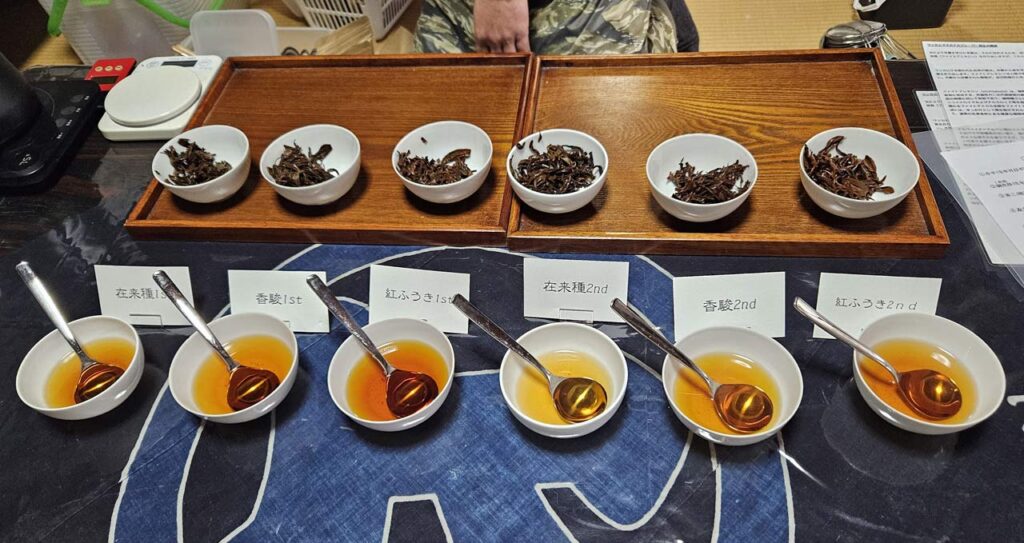
Tea Shop Chagama
After we’d fortified ourselves at the hotel following our morning excursion, we headed to the Tea Shop Chagama to drink more tea. Chagama was opened in 2014 by long-established tea wholesaler Marumo Mori Shoten, which was founded in 1877, to make tea enjoyment available to a wider audience. In the shop, you can sample over 100 teas to find the one that suits your taste, which you can then, of course, purchase on-site. The tea preparation, with all the detailed movements, is an experience in itself. The shop also offers a counter area with fresh drinks like sencha latte or kakigoori in the summer.
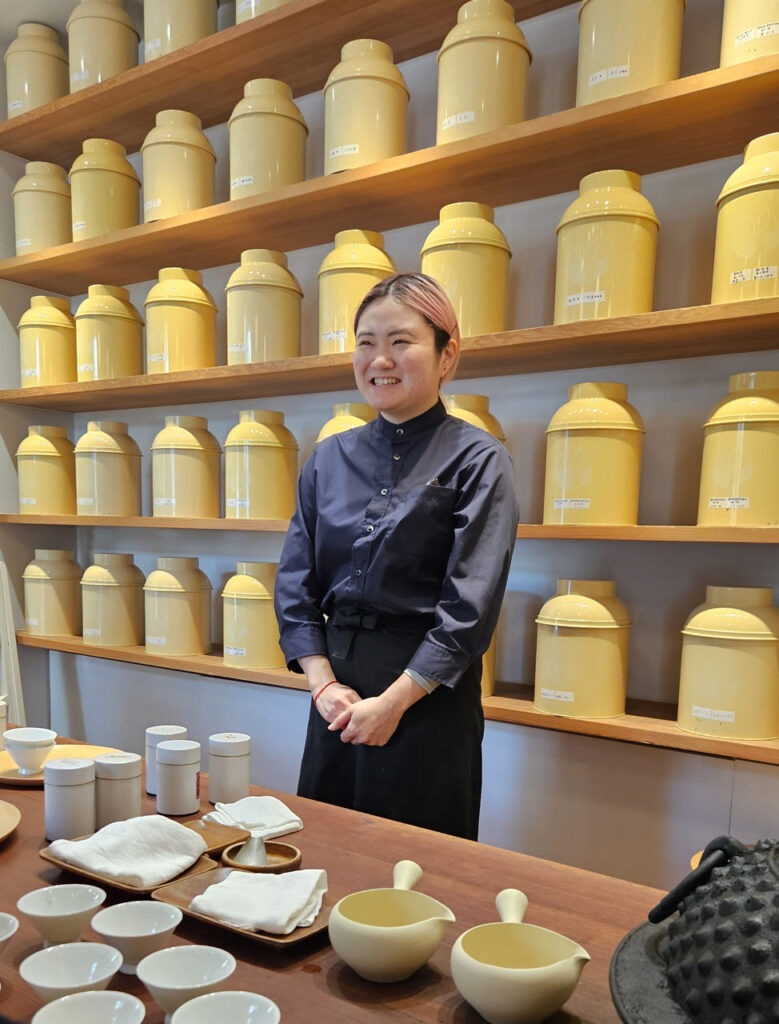
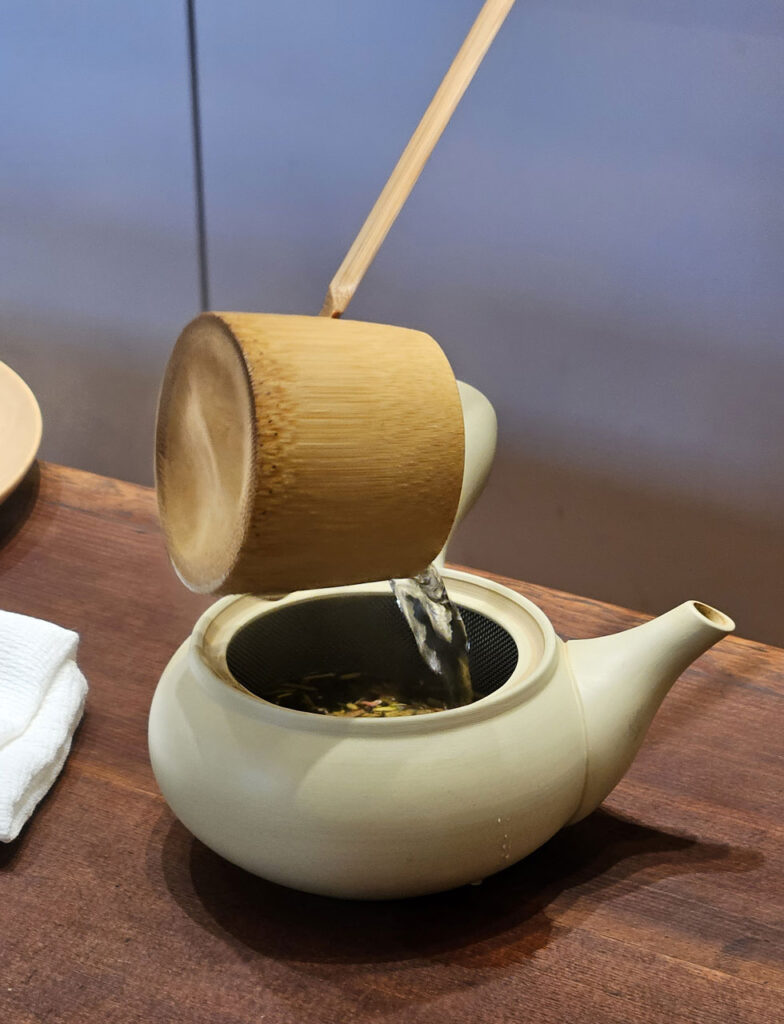
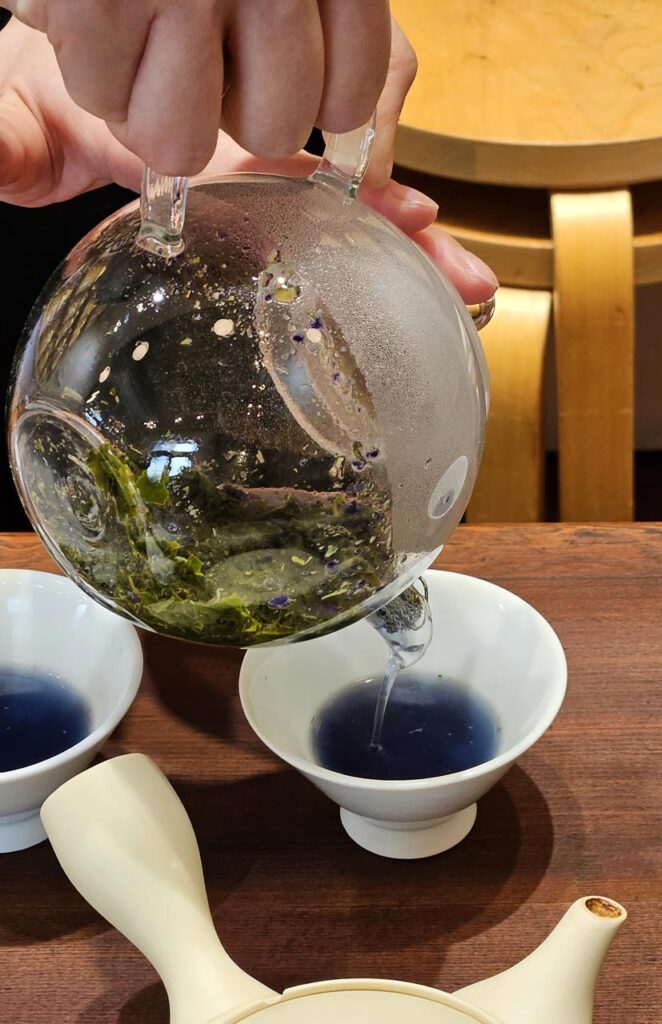
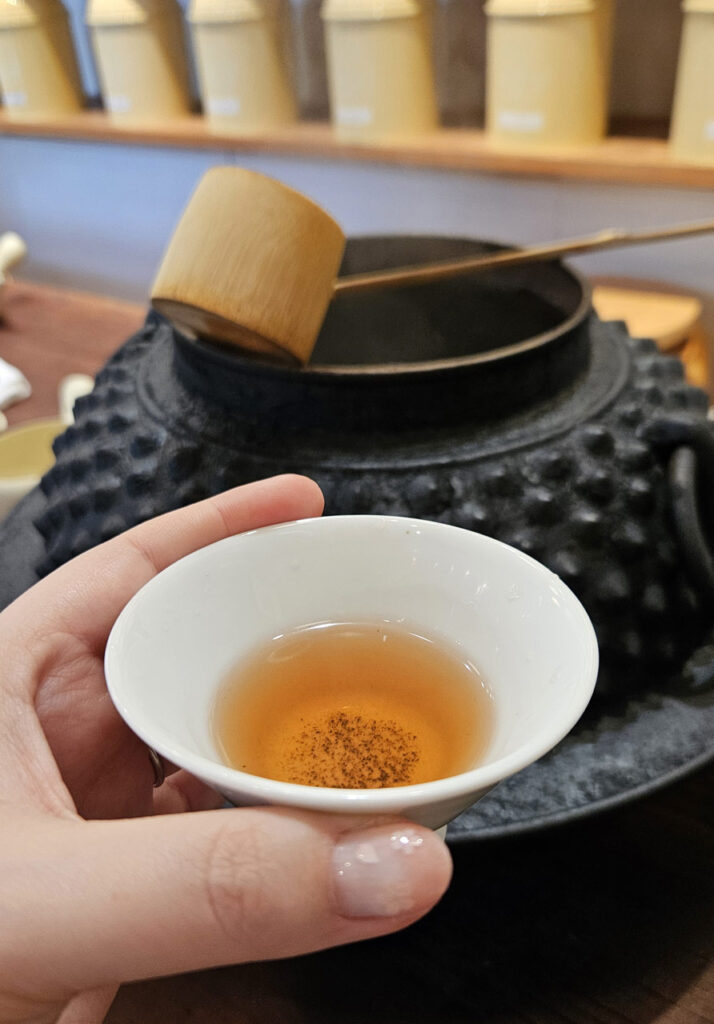
Good Timing Tea
The Good Timing Tea Café also focuses primarily on Japanese tea and serves a variety of beverages, including regular tea, tea with milk, shakes, soda, blends, and even alcohol. The selection is extensive, and in the end, I based my decision on its appearance, opting for the Fuji Matcha Latte, which resembles the famous mountain with the shape of the glass. Prepared with great attention to detail, the Matcha Latte was delicious.
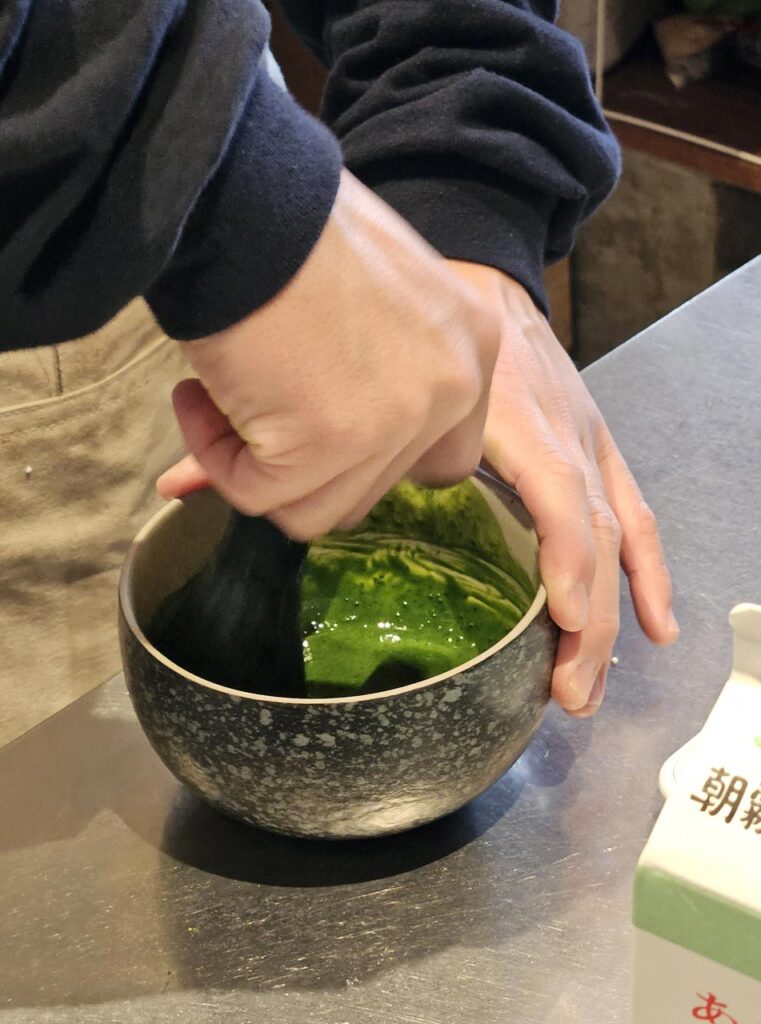
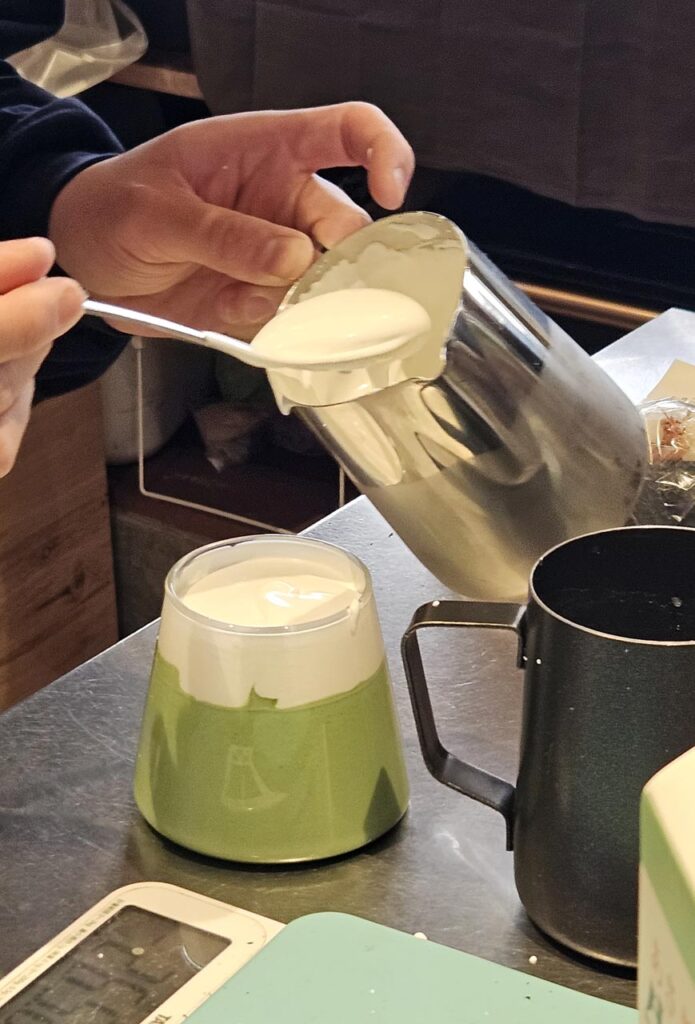

Green Tea in Sweet Treats
And since green tea can be found not only in drinks but also in food, we’ll conclude our tour with a stop at Chato Matcha & Bakery. This small bakery, which just reopened in March after renovations, offers pastries made from carefully selected ingredients and authentic organic matcha. Drinks and other small desserts are also available. The perfect place for a sweet break and a perfect end to our tour.
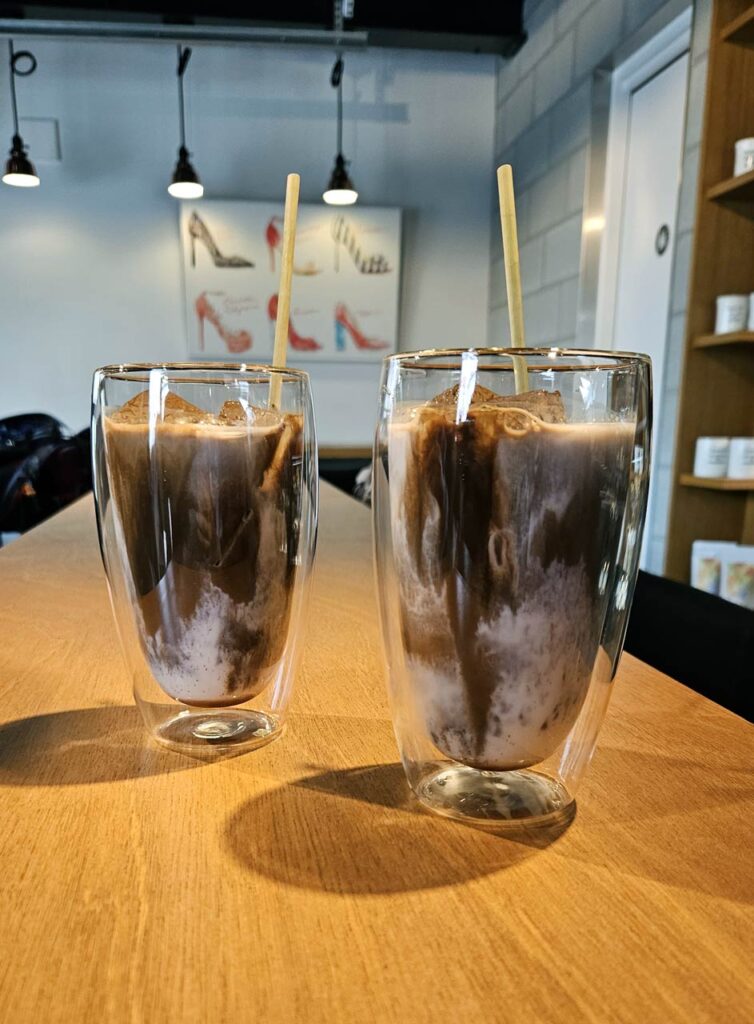
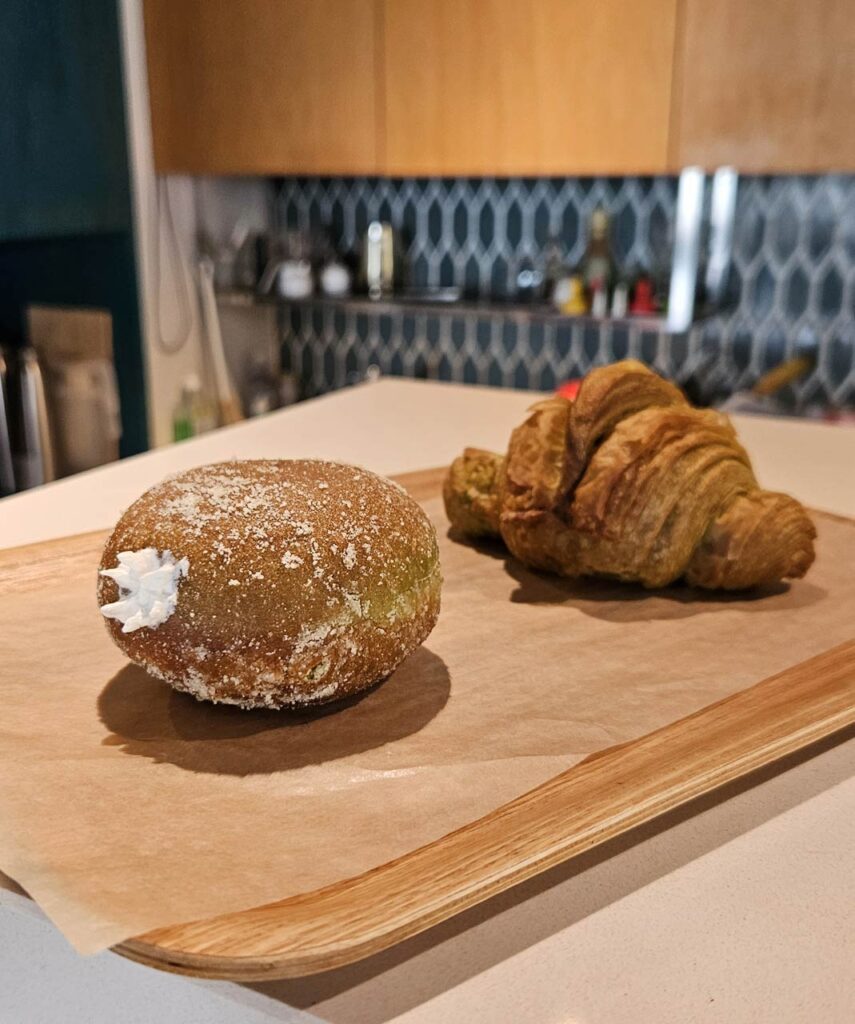
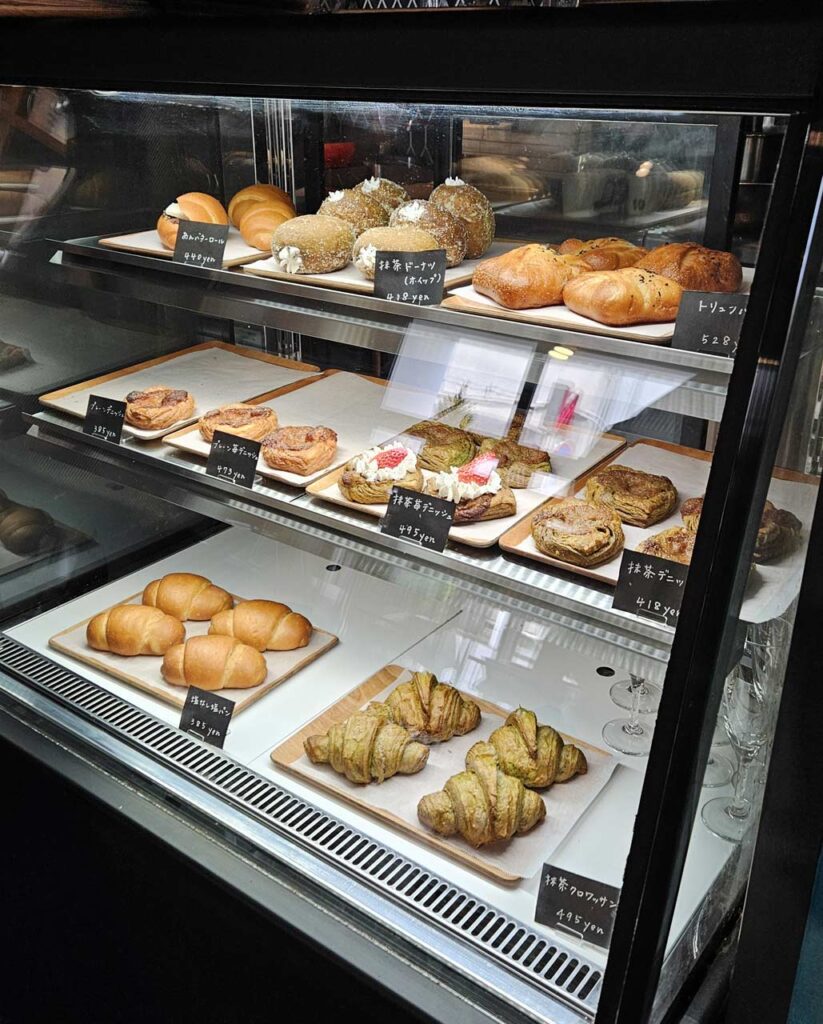
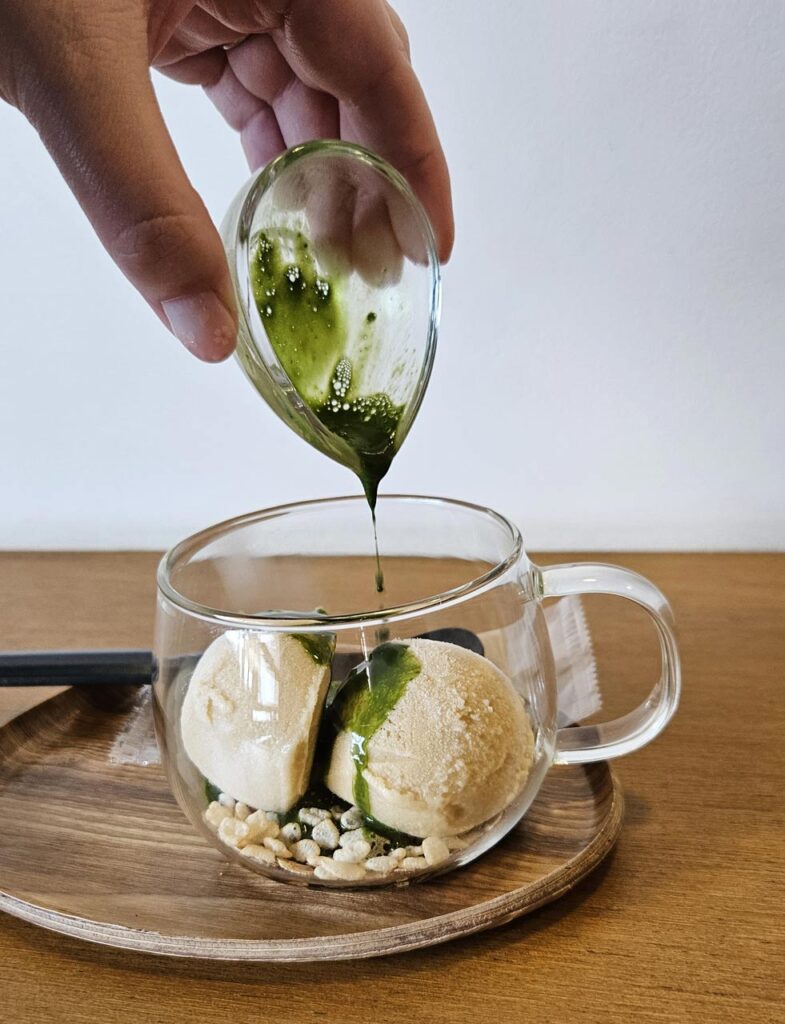
The green tea tour in Sugura was a lot of fun, and I’m grateful for the opportunity to participate. If you’re interested in learning more about green tea and exploring places in Sugura, contact Arigato Travel and they’ll be happy to advise you on your own tour.
